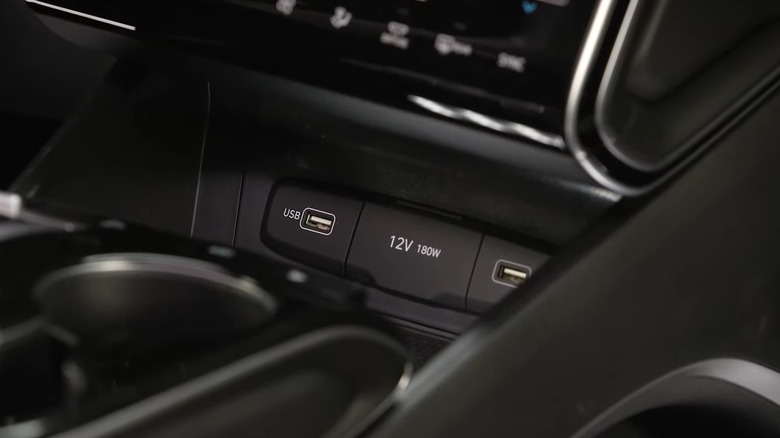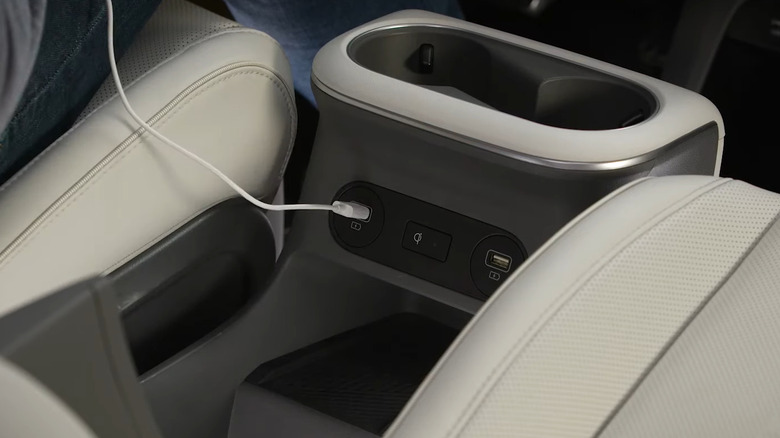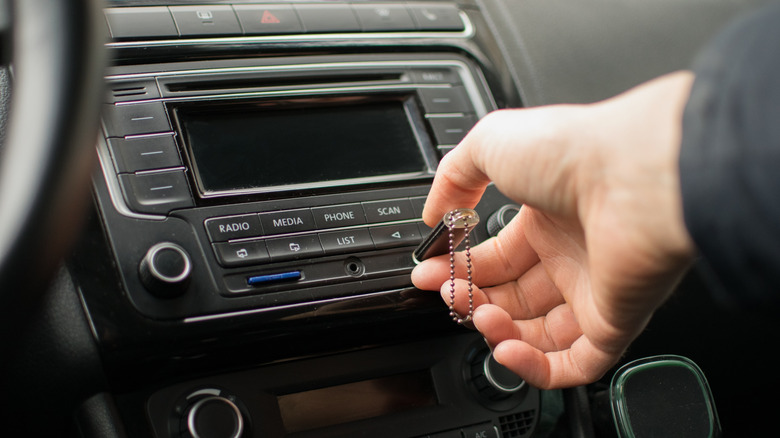USB Ports Not Working In Your Car? These Are The Fixes We'd Try First
Modern-day cars offer plenty of essential connectivity options, including USB ports for connecting various devices. Although they were once a novelty, multiple USB ports are now standard in many vehicles. For example, most Tesla cars come with at least four USB ports, and the model Y can have as many as seven. You can use these USB ports in your car for all sorts of things: charging your devices, playing music from a flash drive, and connecting your smartphone via Android Auto and Apple CarPlay.
That is, of course, if these ports are functioning as expected. So, what happens when you plug a device into your car's USB port and nothing happens? There can be several reasons why your car's USB port may not be working. It could be something as simple as a loose connection or a faulty cable, or it could be related to incorrect settings or outdated firmware. Whatever the cause, there are several things you can do to try to get your car's USB ports working again.
Start with basic fixes
Even if you have a habit of cleaning your car's interior regularly, it's easy to miss the USB ports. A buildup of dust and debris inside the USB port can prevent your cables and devices from connecting properly. Fortunately, cleaning them isn't too different from cleaning the USB ports on a PC. You can use a soft bristle brush or a can of compressed air to safely remove any dust or grime inside the port. Make sure you avoid using any sharp or metal objects, as they can cause more harm than good. Once you've cleaned the USB port, try plugging in your device again to see if it works. If it still doesn't work as expected, try swapping out the cable for one that works on a port elsewhere. Try with different devices too to make sure that its port isn't the problem.
The owner's manual for the Tesla Model 3 states that USB hubs plugged into the car's ports won't work, so always connect your devices directly to your car's USB port. Check your owner's manual to see if this applies to your car as well. Also, you should know that not all USB ports in your car work the same way. While some may support full infotainment system connectivity, others could be limited to charging only. For instance, if you have a Hyundai and notice a USB port with a battery charging symbol below, it means you can only charge your devices from that port. The functionality of USB ports will vary depending on your car's make and model. Check your owner's manual or call your dealership to find out how your car's USB ports can be used.
Ensure device compatibility and install firmware updates
Just because a device has a USB connector doesn't necessarily mean it will work with your car, so it's important to ensure you're using a supported device. Even then, you may need to change some settings on your car's infotainment system to get it working. For instance, if you're trying to play music from a USB flash drive, you'll need to at least change the audio source using your car's controls. Similarly, when using Android Auto or Apple CarPlay for the first time, there is an initial setup process before it will work properly.
Like mobile devices and computers, your car receives regular firmware updates that bring new features and fix issues. An outdated firmware version could be another reason why your USB ports are not working. Before you get too frustrated, make sure your car is updated to the latest available firmware version. The exact steps for this will vary depending on your car's make and model, but your owner's manual and dealership can help you there too. In newer models, you can usually install updates over-the-air using an internet connection. You should also make sure all your devices are running the latest available software.
If your USB ports don't work after updating your firmware, you might have a blown fuse. Check your owner's manual for the location of the fuse panel and panel assignment for the USB ports, and remove the fuse. The metal strip inside the plastic casing should be intact; if it's broken, replace the fuse with one of the same amperage. If your car continues to blow the same fuse, you could have a potentially dangerous short circuit or other issue. In that case, you should have your car's electrical system looked at immediately.


